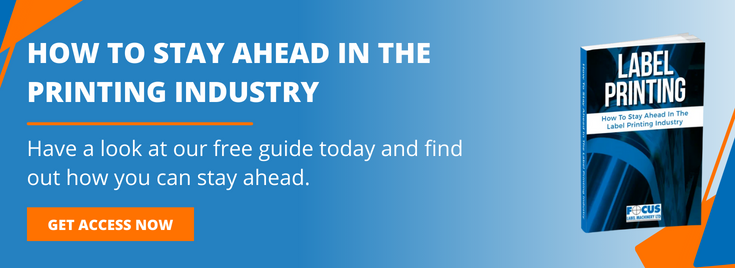
The label printing industry has been dominated by flexographic print technologies for the best part of a century. This remains true, more or less, for high volume print runs. For short runs and flexible orders, however, the ongoing trend is towards the adoption of digital technology. This gives operators far more control over print outcomes and cuts back on the amount of labour and training required to operate presses. The persistent downside of digital printing is the high cost per unit, which rules it out for large volume print runs. This snapshot of the label printing industry is, of course, extremely generalised. There have been improvements in both digital and flexographic printing over recent years that have made each technology more efficient and cost-effective.
With a shift of business practices towards short print runs, coupled with a reduction in the price of digital equipment, we are seeing greater investment in digital label printing equipment across the industry. Is it now time for you to ‘go digital’?
Possibly, yes. Business credit is still cheap and easy to obtain, and digital printing brings with it a lot of advantages in personalisation, easily repeatable jobs and faster change over time.
The Advantages Of Digital Printing:
Briefly, there are four main advantages to digital printing, these being:
1) Seamless Workflow: A seamless workflow reduces errors, minimises paperwork, enables quicker response times and improves print management. Consequently, job set up times are reduced and greater volumes can be printed in a shorter time.
2) Cost Effectiveness: Digital printing comes with very little ‘baggage’. No money or time needs to be invested in print plates, platemaking, ink colour matching, register and colour production. Plus, exact quantities can be printed, leading to a reduction in wastage.
3) Efficient Production: Real time visualisation & sampling , reduced inventories, enhanced and efficient supply chain management, short run productions and lower time to market are all attractive possibilities with digital printing equipment.
4) Market Diversification: Digital printing provides you with more marketing opportunities in the form of sequential/unique coding, personalisation, seasonal promotions and other varied label productions. Move into new markets.
Varieties Of Digital Equipment
If you are considering moving part or all of your production capacity over to digital equipment, there are ways you can do it. You can either invest in a fully digital stand-alone press, or you can look modular digital printing technology to integrate or improve the performance of your flexographic equipment.
Electrophotography (EP) “Laser” Print Technology
Electrophotography was first developed as a nonimpact printing method as early as the mid-1930s. It uses light exposure to impose images and text onto a photo-receptive substrate by means of a photoconductor and dry toner. Electrophotography is a seven stage process that is extremely fast and produces superb print quality on labels of all types. Due to its use of light exposure, EP is popularly known as ‘laser printing’, although lasers are very rarely used. The most common light source are LED lights. EP is a ‘dry’ print method as it does not usually use a liquid toner (although some presses have now been developed to use liquid inks, which result in an even faster process.)
Inkjet Printing
Digital inkjet printing uses aqueous inks with a low viscosity, controllable through precise print head construction. Inkjet printing is the least complex and most affordable of the two digital methods. It has other advantages over EP, including a greater range of colours, greater widths, lower operating costs and a shallow learning curve. Ink jet is becoming the digital technology of choice.
Digital-Enhanced Hybrid Flexo Printing Technologies
Traditional Flexo printing has been enhanced by digital methodologies to produce highly efficient hybrid machines. An example of how this works involves flexographic printing plates with Computer o Plate technology. With a digital printing module, a computer operated laser etches a digital image onto the printing plate. This drastically speeds up the process, with the result that this is now the most common platemaking method.
Advances in Digital control has enhanced Flexo/printing automation. For example, servo motors are now commonly used on the latest Flexo presses. These decrease setup time and waste to a huge extent, while maintaining consistency and quality over large print runs. The servo motors include a programmable interface that responds to the working environment and allows a more flexible approach to production.
And now Digital printing systems are becoming a feature of integration within a larger Flexo printing & converting line.
Advanced Printing Solutions From Focus Labels
To find out more about the best way to invest your capital in Digital Equipment, please speak to one of our print experts at Focus Labels. We can advise you on the best way to spend your budget to align with your business goals and increase your printing capacity.
Please also download our free guide: How To Stay Ahead In The Label Printing Industry, which explains all your options, including various types of digital printing, hybrid and new generation Flexo presses. Click here to claim your copy.







